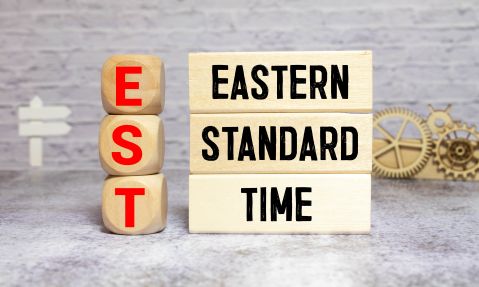Time has a set of time zones. It’s really important to know that the time is different in different parts of the world. There are four major time zone regions in the world.
What is a Time Zone?
A time zone is an area or region that uses the same standard time. Time zones were established once the world became more connected. Thus, they became useful for social, legal, and commercial purposes.
Time zones sometimes follow the boundaries between countries, but not always. In some places, these zones are subdivided. This situation usually comes down to a matter of convenience.
Brief History of Time Zones
Local times were different before the late 1800s. Towns and cities established their own local times. People who lived in a specific city would adapt to the local time with their watches and clocks. So, if someone traveled from one town to another, they would have to update their watch to the new location’s time. At one time, there were over 300 local times throughout the US.
The towns and cities eventually began to build clock towers to help everyone know what time it was. The towers were fitted with huge bells that tolled on the hour. Later, they added smaller bells for the quarter hours.
It was in 1878 that Sir Sanford Fleming, a Canadian engineer, first suggested the implementation of world time zones. He wanted to divide the Earth into 24 time zones that were 15 degrees longitude apart. Why was this important? Because the planet rotates 15 degrees each hour, or 360 degrees in 24 hours.
His idea was adopted in 1883 by railroad companies in the US. The next year, a conference held in New York City determined that the prime meridian (zero degrees longitude) would be in Greenwich, England. Based on Greenwich, they also set up 24 time zones across the planet.
Greenwich Mean Time to Coordinated Universal Time
Once the prime meridian was set, Greenwich Mean Time (GMT) became the world’s standard time. GMT is the local mean (average) time at the Royal Observatory in Greenwich, London, England. This time was used to enhance naval navigation of ships around the world, as well as regulate railroad times.
Eventually, Greenwich Mean Time became Coordinated Universal Time (UTC). The time in Greenwich was UTC+00:00 and became the civil time of the UK.
Summary Table
| East Coast Time | West Coast Time |
| Covers the eastern part of North America | Covers the western part of North America |
| East Coast Time is up to 3 hours faster than West Coast Time | West Coast Time is up to 3 hours slower than East Coast Time |
| Long day | Long sunset time |

The eastern hemisphere is called Eastern Time Zone, and it covers a big part of North America (United States, Canada) and also much of Europe (except most of Russia).
The western hemisphere is called the Pacific Time Zone, and it covers the North American region as well. The western hemisphere is also called West Coast Time Zone, and it covers a large part of Asia (Southeast Asia, Japan, South Korea) and also much of Oceania (Australia).
There are two other zones in the world: Indian Standard Time (IST) and Australia Eastern Standard Time (AEST). The IST zone covers the Indian subcontinent, while AEST is a time zone covering the eastern part of Australia.
Meanwhile GMT stands for Greenwich Mean Time. It’s the mean time in London. GMT is also called Universal Time.
Everywhere on Earth has the same 24 hours of time. But there are differences in time between different places, like on the United States east coast and west coast. In this article, we will learn about the differences between East Coast Time and West Coast Time.
What Is East Coast Time?
East Coast Time Zone in the United States is time that has been composed by combining IST with Eastern Daylight Time. When you are in the eastern hemisphere, it is almost always daytime at noon.
This is because the sun moves from west to east. East Coast Time in the United States is the mean time at which the sun crosses its highest position in the sky due east at noon.
People in the eastern hemisphere move towards the sun’s highest point in the sky during summer and they spend their winter days at their lowest point in the sky. So, East Coast Time is also called Daylight Saving Time.
What Is West Coast Time?
Different countries in the western hemisphere have their own time zones. In the United States, the western hemisphere is called the Pacific Time Zone. It covers most of the Western United States (California, Nevada, Arizona), and also many parts of Mexico.
The Pacific Time Zone in the United States is time that has been composed by combining PST with Mountain Standard Time. When you are in the western hemisphere, it is almost always nighttime at noon.
This is because the sun moves from east to west. Pacific Time Zone in the United States is the mean time at which the sun crosses its lowest position in the sky due west at noon.
How Are They Related?
Both the East Coast Time Zone and West Coast Time Zone are divided into 12 hours. But East Coast Time and West Coast Time are not equal. They only have the same number of hours.
Besides that, East Coast Time is shifted by 4 hours in each direction compared to West Coast Time. In other words, East Coast Time is up to 3 hours faster than West Coast Time.
If you are in the eastern hemisphere, you will have a very short sunset time and a long sunrise time. On the other hand, if you are in the western hemisphere, you will have a very long sunset time and a short sunrise time.
However, they are related in another way. When you travel from one region to another, your time will be changed, but it’s not the same amount of change.

What Are The Differences?
Of course, East Coast Time and West Coast Time are different. Even though they have the same number of hours and can be used in the United States, they are different. These are some of the differences.
Location Coverage
East Coast Time in the United States covers the eastern part of North America, such as New York, Washington, and some parts of Canada.
West Coast Time covers the western part of North America, such as California, Nevada and Arizona. They are not equal in that way.
Time of Sunrise and Sunset
East Coast Time has a very short sunrise time, while West Coast Time has a long sunset time. East Coast Time is up to 3 hours faster than West Coast Time, which means that the sunrise and sunset times are different.
Sunrises and sunsets in the eastern hemisphere are very short, that’s why they call it Daylight Saving Time. Many people in the eastern hemisphere spend their time at their lowest point in the sky.
They go to work and play during their day, like they do in West Coast Time. People in the western hemisphere have a very long sunset time, that’s why they call it Pacific Standard Time.
Their days are very long and many people spend their time at their highest point in the sky. They go to work and play on weekends, like they do in East Coast Time.
Time Zones
East Coast Time in the United States is divided into two time zones, Eastern and Central. But West Coast Time is divided into two time zones, Pacific and Mountain.
Mean Time
East Coast Time and West Coast Time are different. East Coast Time is up to 3 hours faster than West Coast Time, which means that the mean time of sunrise and sunset is different.
Even though they are both almost the same, East Coast Time is shifted by 4 hours in each direction compared to West Coast Time. That’s because East Coast Time is up to 3 hours faster than West Coast Time.
When you are in the eastern hemisphere, you will have a very short sunrise time, while your day is very long. You will have a long sunset time and a very short sunrise time in the western hemisphere.





